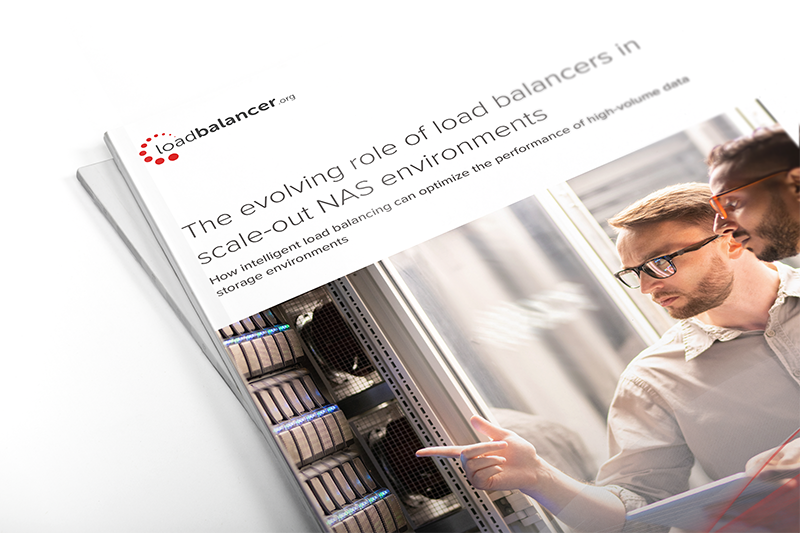
Finance
Load balancing banking applications for secure and highly available customer services
Why high performing and secure application delivery is critical for financial services
Continuous innovation in complex financial environments is tough. Your quest for simplicity, scalability, and resilience is neverending. A clever, not complex load balancing solution is just what is needed. Coupled with the flexibility to match your consumption needs for long-term success and cost control. We tick all these boxes and more!
Loadbalancer.org has a wealth of experience providing unbreakable banking and finance solutions, augmenting the performance of applications and networks across the sector – from the smallest credit union to the largest international blue-chip.
Finance Resources
Check out our library of finance resources to see how it works in practice.

Explore
Load balancing rationale
Why load balance finance applications?
Applications don’t exist in isolation. The essential integration of a number of separate workflows outside these applications requires an end-to-end approach to managing the traffic flowing through this software.
It is only by ensuring the high availability of the entire data chain that the expectations of users can be adequately met.
Augmenting finance apps by safeguarding workflows and keeping them online 24/7
Uninterrupted uptime
A load balancer is a front-end server that takes incoming requests and forwards them to a multitude of back-end servers. This improves the performance of the application by reducing the burden on a particular server or directing it elsewhere when demand surges or there’s a critical system failure. For this reason, load balancers are most commonly deployed in active-passive pairs to ensure traffic can then be redirected to the redundant device.
Why does that matter you might ask? Well, server fairy godmother = no impact on the end user when something fails. Now you might not care if Facebook goes down, but you certainly would care if you were trying to buy a house and your banking app crashed halfway through the transfer!
An extra level of security
Loadbalancer.org appliances come complete with an additional layer of security. Our WAF (web application firewall) protects web based applications from common vulnerabilities by applying a set of rules to HTTP traffic and blocking actions it regards as suspicious. And, unlike other vendors, we care enough to include a WAF as standard because we want it to be there if our customers ever need it.
Compliance, data and network security
Compliance and security
In the US, banking regulations are somewhat fragmented, due to regulations at both the state and federal level. All regulators, however, take a forensic interest in banking systems and controls, placing an equal emphasis on data protection and security, anti-money laundering, and compliance. Data and network security affect every aspect of day-to-day banking and finance operations. A breach could be catastrophic, disrupting uptime and taking your applications away from the people who need them.
This is where load balancers have a key role to play in the realization of any security strategy – acting as an end-of-line padlock.
Resilient IT infrastructure
It’s not just a data breach that financial services need to worry about. With banks competing to harness ever-increasing amounts of unstructured big data, AI and automation, intelligent server solutions are needed that are fit for this purpose.As important, if not more so, is the need to deliver uninterrupted uptime for their critical finance applications.
Hence the load balancer also plays a key role in system resilience and providing redundancy for failover, should a critical system failure occur.
Load balancing methodology
How does load balancing work?
Load balancers augment existing data workflows by proactively managing the incoming application and network traffic across a group of backend servers, making sure no one server is overloaded.
This provides redundancy and removes the ‘single point of failure’.
Intelligent traffic distribution
The load balancer sits in between the user, or ‘client’, and the server cluster and distributes all the requests from users across all servers capable of fulfilling those requirements, which may be local within the same data center or geographically dispersed across the internet or private networks.
By utilizing a ‘least connection‘ algorithm, load balancers can evenly distribute the incoming application and network traffic across a group of backend servers, making sure no one server is overloaded – which could degrade performance, or result in a server crashing. They manage and intelligently spread out server load, increasing the capacity and reliability of applications, leading to improved overall application performance. If one server goes down, a load balancer immediately redirects traffic to the remaining healthy servers, thus resulting in a super-fast failover. When any new servers are added to a server pool, a load balancer automatically starts sending requests to it.
An introduction to load balancing
With no technical jargon, this white paper describes load balancers in terms everyone can understand and explains how they improve the performance of web sites, mobile apps and key business systems.
Load balancing benefits
What are the benefits of load balancing finance applications?
End users want a seamless experience, IT teams want to de-risk their architecture and simplify maintenance, and the C-suite want to reduce costs.
End user benefits
- End user experience: load balancers provide consistent and fast app performance for thousands of concurrent users.
- High availability: load balancers ensure applications are always accessible.
- Scalability: load balancers make it easy to change server infrastructure without disrupting the user experience.
Technical benefits
- Zero downtime: load balancers instantly and automatically re-route traffic to an alternate server in the cluster, eliminating interruption in application availability.
- Redundancy: if something goes wrong with one server, load balancers re-route traffic to the backup server, which then takes over and restarts applications that were running on the failed server.
- Clever not complex: load balancers with a simple management interface allow self-service and easy maintenance.
- No maintenance downtime: load balancers allow IT teams to disconnect, patch, upgrade and reconnect servers without disruption for users.
- Enhanced security: load balancers can add an additional layer of security.
- Seamless migration: load balancers such as ours have the same interface and features available across all platforms, simplifying migration.
Cost benefits
- Cost optimization: fixed running costs or BYOL options mean you can get the load balancing solution you need, at the price you want.
Load balancing Fiserv Applications
How can Fiserv finance applications be load balanced?
Here we provide an example use case of how load balancing can enhance a finance application – in this instance, Fiserv’s DNA connect.
Use case: The problem
Fiserv provides financial solutions from account processing to mobile banking and beyond. Their goal is to help banks manage all of their day-to-day activities, so they can focus on building customer relationships. They are fully cognizant of the fact that attracting and retaining customers requires secure, reliable, user-friendly financial applications.
Fiserv therefore approached Loadbalancer.org to help them load balance one of their flagship products, Fiserv DNA connect, to ensure their application would be able to meet growing customer demand. Fiserv’s need to ensure customers got the user experience they wanted, with the security and reliability they needed, meant a load balancer was essential.
There was also a desire from Fiserv’s clients to supplement their core DNA solution with a load balancer to improve availability and scalability of the platform, meaning Fiserv was able to assure financial institutions of its ability to meet customer demand.
Full details of the solution implemented can be found in the case study below.
“Loadbalancer.org demonstrates 100% commitment to our business every day. With its responsiveness, technical ability and virtualized solutions, it has given us the complete package.
Use case: The solution
Fiserv’s ability to now sell their solution in a load balanced package has led to a significant increase in Fiserv’s turnover, as financial institutions are reassured of their ability to meet customer demand.
Full details of the Fiserv deployment and load balancer configuration can be found in the step-by-step guide below. It outlines how to do the initial set-up, how to set up the virtual service (VIP), how to run health checks, test the high availability failover, and where to get technical support.
Deployment guide
This guide details the steps required to configure a load balanced Fiserv DNA SAF Server environment.
Load balancing object storage
Why do financial institutions need to load balance object storage?
Immutable backups play an important role in protecting data from ransomware attacks. And load balancers play an important role in keeping these data storage solutions highly available, providing immediate failover should a system failure or cybersecurity attack occur.
Chapter Overview
The importance of object storage
Object-based storage is a flexible and scalable storage architecture that stores all data as objects in a flat name space.
Banks rely heavily on object storage solutions to facilitate the complex mining, retention, management and analysis of a variety of big data sets, to gain competitive advantage. Increasingly they are learning how to fully harness object storage in banking using load balancers.
Most of these storage solutions remain on-premise, as financial institutions prefer to keep control of their private data, rather than rely on another company to keep it safe.
How immutable backups fight ransomware
With increasingly sophisticated ransomware attacks keeping IT teams up at night, financial institutions are falling over themselves to protect their customers’ personal data, in the event of a ransomware attack.
A key part of this is using immutable backups to protect their object storage, for two very good reasons:
- Immutable backups are the ‘big daddy’ of backups – data is held securely, making it fixed and unchangeable, meaning it cannot be deleted. Simply having a backup copy is not a defense. Hackers know to target the backup copies first. For backups to be effective, the copies must be unchangeable (or immutable). They are protected from encryption by ransomware only if the data cannot be changed.
- Data is recoverable at any time.
This level of data protection prevents intentional deletion in the unfortunate event of a ransomware attack. The other VERY good reason for using immutable backups is because you will probably struggle to get cyber security insurance without it. Perhaps not unsurprisingly, insurance companies require financial institutions to demonstrate that they have done everything in their power to protect against a ransomware attack before paying out – should such an eventuality arise.
The role of load balancing in supporting immutable backups
The load balancer sits between the object storage and backup applications that generate that data, providing intelligently designed, indestructible, enterprise, scale-out solutions. So load balancing ensures that your data is stored and recovered efficiently, as well as remaining available at all times, from anywhere.
Load balancing Scality and Cloudian
How can object storage be load balanced for high availability and security?
Here we look at how load balancing can augment two outstanding storage solutions: Scality RING and Cloudian Hyperstore.
Chapter Overview
Use case: Scality RING
- It ensures data is highly available and accessible at all times
- The load balancer makes the storage solution scalable in order to meet growing data demands
- The load balancer monitors and performs health checks to ensure traffic is routed correctly.
Full details of how this deployment would work can be found in the step-by-step guide below.
Load balancing object storage for scalable, secure data access and recovery
Description underneath this, its the pillar page about this more text load balancing object storage for scalable, secure data access and recovery
Use case: Cloudian Hyperstore
Load balancing object storage applications, like Cloudian’s, reduce infrastructure complexity through intelligently designed and infinitely scalable network architecture. This partnership enables financial institutions to benefit from indestructible, enterprise, scale-out object storage solutions.
Cloudian offers banks the most data security certifications of any on-premise object storage application. They offer financial services organizations a backup target that can provide end-to-end data protection to meet compliance requirements, whilst also enabling fast and easy data access.
They have two key applications of particular interest to financial services.
Cloudian HyperStore which solves major storage challenges with the industry’s most compatible Amazon S3 API. Adding a load balancer to this allows customers to scale seamlessly through proven hyperscale architecture.
As a leading supplier of object storage solutions, Cloudian needs to ensure high availability and scalability for customers with critical research data and other intellectual assets of international importance. To keep back-up systems running at all times, it uses solutions from Loadbalancer.org to help it store and secure hundreds of terabytes of data every week.
In this instance, we collaborated with Cloudian to deploy our load balancers to safeguard over 1.5 petabytes of data and intellectual assets.
The other key Cloudian application is Cloudian Hyperfile. It is a scale-out NAS platform that provides file system protocols for clients and transparent data tiering to object storage. Full details of how our load balancers can be deployed to strengthen this solution can be found below.
For more detailed, strategic information on the importance of using a load balancer to ensure scalability for NAS environments, refer to the following white paper.
Supporting resources
Load balancing print management solutions
Why do financial institutions need to load balance print management solutions?
The variety of print environments and print management solutions means load balancing has an integral role to play in simplifying this infrastructure and change controls, in order to provide always-on printing and optimal performance.
Chapter Overview
Incompatible tech and compliance
Not only do banks and financial institutions print copious amounts of sensitive financial documentation and annual reports, they do so whilst having to integrate and manage new and legacy technology, such as fax machines.
The expectation of faxing is that the transmission travels along one solid copper wire from one fax machine to another. However the reality is that somewhere on that journey transmission has most likely gone VoIP, no longer travelling along one continuous wire. Depending on the fax machine, many of them are received electronically and then printed on demand when needed. So a print management system is needed to police and aggregate both new and old technologies.
Financial institutions also rely heavily on high availability printing for financial agreements such as mortgages, which often need to be printed and stamped in branch to confirm completion of the transaction. This is nearly always time-sensitive to ensure funds are then approved for transfer.
Furthermore, employment contracts typically need to be signed on hard copy printed documents, with real ink signatures and/or initials on each page – and not digital representations. Again the print and signature exchange is typically time-sensitive, to seal the deal and prevent top talent joining a competitor. Losing a key hire to a faulty printer can therefore have catastrophic strategic as well as financial consequences; especially given the substantial cost and time to hire. This vertical can therefore certainly take advantage of not only a load balancer, but also a print management system that allows better control of what, where, when, why and how paper is being handled.
The role of the load balancer
Ultimately, whatever the organization is trying to achieve and whatever their print environment looks like, they want to achieve four things: zero downtime, simplified infrastructure, easy maintenance and optimal performance.
Implementing a Loadbalancer.org solution is key for the following reasons:
- Always-on printing – When it comes to achieving zero downtime, load balancing grants the ability to failover without any impact on users.
- Simplified infrastructure – Infrastructure can be scaled up and down, mitigating the need for constant DNS and firewall configuration changes.
- Simplified change controls – Servers can be brought on and offline at the touch of a button, making change controls simpler.
- Optimal performance – Optimal performance is ensured, as the load balancer spreads network traffic across multiple servers
Varied print environments
A Windows print server is the defacto when setting up a printing service within a Windows environment. It’s as simple as installing the Print and Document Services via the server manager. This sort of environment might be found in a small business with two print servers and printers segmented by departments; in an enterprise with multiple sites across the globe; or in hospitals that require medical images to be sent to various devices such as printers, tablets or PCs.
Find out here how to load balance a Windows print server.
Moving on from simplistic environments to those that require a little more management; solutions such as PaperCut are deployed to enable exactly that. In PaperCut NG and MF v20.0, PaperCut introduced an active/passive Application Server Failover feature and support for using a Network Load balancer.
The passive Application server will automatically assume the role of active server if the primary Application server is offline. A Network Load Balancer is required to manage the re-routing of network traffic to the new active server.
In the event of the Application server going offline without a load balancer and High Availability, services are lost. With one, however, there’s an automatic failover to ensure nominal downtime, and continuity of business. There are also notifications available at the load balancer level to alert the appropriate people who can then investigate and resolve the server failure.
Find out here how to load balance PaperCut.
Load balancing enterprise print solutions for secure, always-on printing
Printing is more critical and relevant today than you might think. Hospitals without a printer would struggle to check-in and discharge patients, print prescriptions, wristbands, or medical notes for busy doctors. Banks would be unable to print investor reports for results day.

